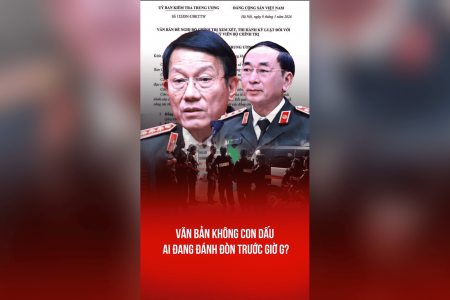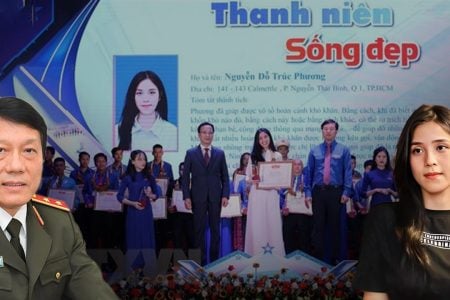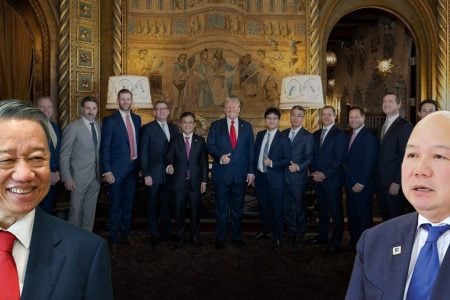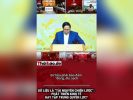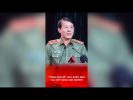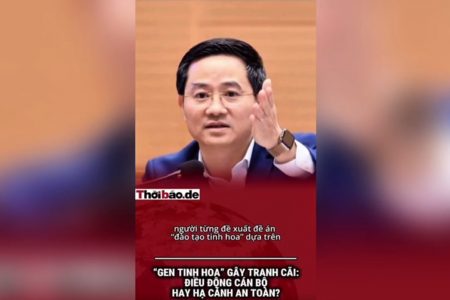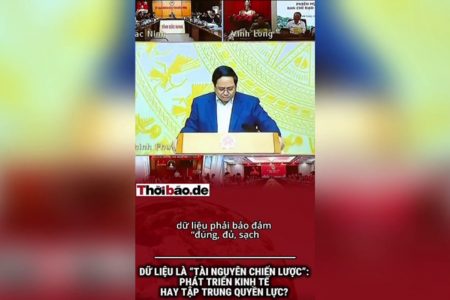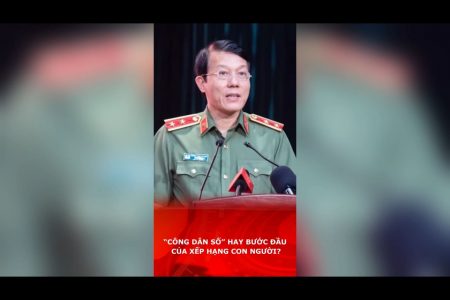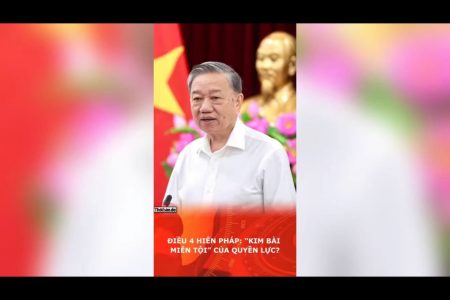
Zen Master Thich Nhat Hanh, a world-famous Buddhist leader, has just passed away at midnight on January 22, 2022, in Tu Hieu Communal House, Hue City, at the age of 95, the Plum Village website announced.
VOA has also been confirmed by close disciples of the Zen master about this departure. Plum Village’s statement said he passed away “peacefully.”
Zen Master Thich Nhat Hanh is a propagator and developer of Buddhism in the modern West, an advocate of “engaged Buddhism,” applying Buddhism to solve problems in personal life and contemporary society.
The Zen master’s health deteriorated after a stroke in 2014 left him in a wheelchair until now. Since 2018, he has completely returned to Vietnam to recuperate in the „Patriarchal place“ of Tu Hieu Communal House, where he had been ordained as a monk in the past.
Leaving home and becoming a monk
Born on October 11, 1926, in Hue with the customary name Nguyen Xuan Bao, Zen Master Thich Nhat Hanh left home as a novice monk at the age of 16 at Tu Hieu Communal House, Hue city, and was ordained as Zen master Thanh Quy Chan That of the sect of Mahayana Buddhism.
In the early stages of his practice, the Zen master used to take on the responsibility assigned by the Unified Buddhist Church of Vietnam (which was later abolished by the Hanoi government), such as the editor of the Vietnamese Buddhist magazine in 1956. He also founded La Boi Publishing House, participating in the founding of Van Hanh University in Saigon. In the 1960s, he founded the School of Youth for Social Service (SYSS), a Buddhist charity of about 10,000 volunteers who traveled to villages to build schools and clinics and rebuild villages which are ravaged by the Vietnam War.
From 1961, he started going abroad, studying and teaching Buddhism. Then he gradually spent all his time living and serving abroad after being unable to return to Vietnam for nearly 40 years after that.
In 1961, in the United States, he taught Comparative Religion at Princeton University, and the following year he went to Columbia University to teach Buddhism. In 1963, he returned to Vietnam to join in nonviolent peace advocacy efforts with his fellow initiates.
In 1966, in the midst of the increasingly fierce Vietnam War, he went to the US and Europe to call for peace and an end to hatred in Vietnam. He traveled widely, spreading messages of peace and love, lobbying Western leaders to end the Vietnam War, and leading a Buddhist delegation to the Paris Peace Negotiations in 1969.
During his visit to the US in 1966, Zen Master Thich Nhat Hanh first met the famous human rights activist Martin Luther King Jr. to persuade him to speak out against the Vietnam War. Later, it was Martin Luther King Jr who nominated him for the 1967 Nobel Peace Prize. That year, the Nobel Committee did not choose the Nobel Peace Prize.
Since neither the North Vietnamese nor the South Vietnamese governments would allow him to return to Vietnam, he began a life of exile for 39 years until 2005 before returning to Vietnam for the first time.
Lang Mai
Besides anti-war activities, abroad, he continues to teach, lecture, and write books on ‚mindfulness‘, ‚awakening‘, and ‚living in peace‘ to spread Buddhism to the Western world. West.
In the early 1970s, he became a lecturer and researcher of Buddhism at Sorbonne University, Paris.
In 1982, Zen master founded Dao Trang Mai Thon, or Lang Mai, consisting of a system of monasteries in the Dordogne region of southwestern France.
According to Lang Mai’s website, from a small village at first, Lang Mai has become ‚the largest and most active Buddhist monastery in the West‘ with over 200 monastics and nearly 8,000 lay people from all over the world. come to practice every year to learn how to live mindfully.
At Lang Mai, Zen Master Thich Nhat Hanh re-applies practices dating back to early Buddhism and has been simplified and adapted to be easily applicable to the difficulties and challenges of modern life. It is completely letting go, resting, smiling, mindful breathing, mindful eating, walking meditation, sitting meditation…
Lang Mai in France (currently three monasteries are Tu Nghiem, Phap Van, and Cam Lo with the same meditation hall) was later expanded to add other Lang Mai centers such as in the US, Germany, Vietnam, Australia, Hongkong, and Thailand. In Vietnam, Lang Mai has two facilities: Tu Hieu Communal House in Hue and Bat Nha Zen Monastery in Bao Loc, Lam Dong. In the US, Lang Mai has four monasteries, namely Loc Uyen (California), Bich Nham (New York), Moc Lan (Mississippi), and Thanh Son Dojo (Vermont). These monasteries are home to thousands of monastics from many countries around the world and regularly organize retreats for laypeople of all different backgrounds such as families, teenagers, veterans, parliamentarians. doctors, law enforcement officers, showbiz, and people of color.
He also proposed the ‚Five Mindfulness Practices‘ calling on people to practice reducing suffering for the human world and all sentient beings on earth.
Peace at every step
He is respected around the world for his powerful and inspiring teachings on mindfulness and peace. His main message is that through mindfulness, people can learn to live peacefully in the present and thereby build peace within themselves and build peace in the world.
He has published more than 100 titles on meditation and mindfulness, including such famous works as the Miracle of Mindfulness, Vietnam – Lotus in Sea of Fire, Old Path White Clouds, Peace is Every Step, etc. In the US alone, his works have sold more than three million copies.
He has also been invited to speak at UNESCO headquarters in Paris, calling for concrete steps to be taken to reverse violence, war, and climate change. In 2013, he led high-profile mindfulness events at Google headquarters, the World Bank, and Harvard Medical School.
Through his activities of teaching and spreading Buddhism, Zen Master Thich Nhat Hanh has tens of thousands of disciples around the world, including many famous figures in the political, business, and entertainment world.
He is known internationally by many titles such as “The Messenger of Peace and Nonviolence,” “The Father of Mindfulness,” “Another Dalai Lama” or “The Zen Master Who Can Drag People to the Courtyard motor.”
He is said to be fluent in English, French, Chinese, Japanese, Sanskrit, and Pali.
Final Home Return
Zen master Nhat Hanh lived in exile for 39 years until his first visit to Vietnam in 2005 after lengthy negotiations with the Hanoi government.
In 2007, he returned home for the second time, organized the ‚Dai dan dan equal medical examination‘ in all three regions of Vietnam, to pray for the deceased compatriots and fallen soldiers of both South and North.
In 2008, he returned to Vietnam for the third time, as the main speaker for the United Nations Day of Vesak.
In 2017, he returned to Vietnam for the fourth time from Thailand to recuperate after suffering a stroke due to cerebral hemorrhage in 2014.
On October 26, 2018, he returned to Vietnam for the final time to recuperate until the day of “passing away in the ancestral place” of Tu Hieu Communal House in Hue.
Thoibao.de (Translated)



